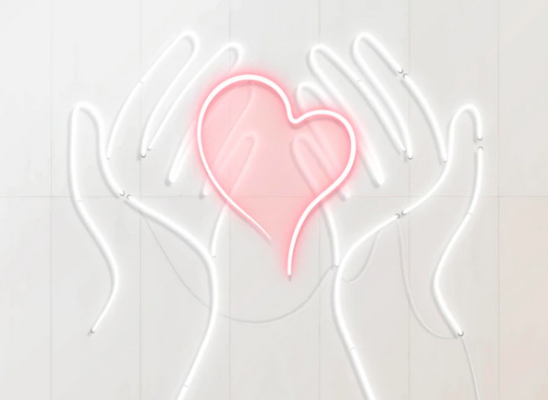Acceptance and Commitment Therapy for Hair Pulling: New Hope for Treatment

Online test
Find out the severity of your symptoms with this free online test
Hair pulling is a complex disorder that is characterized by hair-pulling that impedes functioning. The pulling is in response to overwhelming urges that subside once the pulling is done. Not all hair pulling is the same. There are two identified subtypes of hair-pulling disorder – focused and automatic pulling. Some people are quite aware and methodical in their pulling behavior. They may use tools like tweezers or mirrors.
There is a satisfying and, sometimes, pleasurable response when the pulling is done. This type of pulling is known as focused pulling. It is done with full awareness and intention. Others pull in a more automatic, trance-like behavior and may not even be aware that they’ve pulled. This type of pulling seems to be done to regulate internal stimuli such as emotions and thoughts. It is known as automatic or internally regulated pulling. Many people experience both types of pulling to varying degrees which can make treatment challenging.
When it comes to treatment, there is no single protocol that works best for hair pulling or is considered “the one”. Most approaches have focused on the automatic part of hair-pulling. Habit Reversal Training (HRT) has long been the most widely used non-pharmaceutical treatment for hair pulling. HRT is well-suited to address the automatic components of hairpulling because of its strong focus on awareness, blocking, and reinforcement elements.
What it lacks is the ability to address the emotional and cognitive factors associated with hair pulling. This has prompted researchers to look at treatment approaches that can address the areas that HRT does not such as the urges, the emotions, and thoughts that accompany hair-pulling episodes. One approach that is gaining support is Acceptance and Commitment Therapy (ACT). Findings from a new study suggest that ACT may be the treatment approach that can address these aspects of hair-pulling.
Why Acceptance and Commitment Therapy?
ACT is a type of behavioral therapy that has at its core, the aim to accept what is out of one’s control and commit to actions that can improve and enrich one’s life. ACT is a powerful, evidence-based intervention that uses acceptance and mindfulness strategies, together with commitment and behavior change strategies, to increase psychological flexibility.
One of the primary goals of ACT is to learn skills, known as mindfulness skills, for handling painful thoughts, feelings, urges, images, and memories (called private experiences) in such a way that they have much less impact on the person. Developing a new mindful relationship with experiences allows the person to make positive changes. For someone with hair pulling, this acceptance may allow the person to experience urges simply as bodily sensations and internal thoughts that do not need to be stopped before engaging in meaningful activities. This makes ACT a potential treatment for hair pulling, addressing the components that other therapies cannot.
The Study
ACT has been studied as a complementary treatment along with HRT, sometimes referred to as ACT-enhanced HRT. ACT has also been examined as a stand-alone treatment for other disorders on the obsessive-compulsive spectrum with some promising results. This 2020 study specifically looked at the effectiveness of using ACT as a stand-alone treatment for the treatment of hair pulling in adolescents and adults. Treatment consisted of a 10-session ACT protocol developed by an ACT-trained therapist.
Researchers evaluated changes in symptom severity, the daily number of hairs pulled, urges experienced, and experiential avoidance. The findings showed a significant reduction in symptom severity and daily hairs pulled, but not in daily urges experienced or psychological flexibility. However, there was a 24.5% decrease in psychological inflexibility in the treatment group, dropping from clinical to subclinical levels on average. These findings suggest that ACT alone is an effective treatment for adults and adolescents with hair pulling. These findings are similar to those that have been reported in studies combining ACT with HRT.
Treatment Implications
While there is no one treatment for hair pulling, this study suggests that ACT may offer help to those dealing with the disorder. ACT addresses those components of hair-pulling that other treatments may not, and takes a mindfulness approach that is quite comfortable for a lot of people. Mindfulness also helps to keep the person grounded and focused, possibly helping to deter the onset of trance pulling.
As with any treatment and any disorder, there is no one treatment that works for all people, all the time. One of the important takeaways from this study is that ACT offers therapists one more tool that they can offer people seeking help. Individualized approaches allow the therapist to work with the person’s unique preferences and needs to develop a treatment plan that takes into account those unique qualities.
While more research is needed, ACT offers hope for more effective and accessible treatment options for those dealing with a hair-pulling disorder.
References
1. Flessner, C. A., Woods, D. W., Franklin, M. E., Cashin, S. E., & Keuthen, N. J. (2007). The Milwaukee inventory for subtypes of trichotillomania-adult version (MIST-A): Development of an instrument for the assessment of “Focused” and “Automatic” hair pulling. Journal of Psychopathology and Behavioral Assessment, 30(1), 20-30. doi:10.1007/s10862-007-9073-x
2. Lootens, C. M., & Nelson-Gray, R. O. (2016). Treating trichotillomania: Successful application of manualized cognitive-behavioral therapy. Clinical Case Studies, 15, 376-391. https://doi.org/10.1177%2F1534650116649438
3. Lee, E. B., Homan, K. J., Morrison, K. L., Ong, C. W., Levin, M. E., & Twohig, M. P. (2020). Acceptance and Commitment Therapy for Trichotillomania: A Randomized Controlled Trial of Adults and Adolescents. Behavior Modification, 44(1), 70–91. https://doi.org/10.1177/0145445518794366
4. Association for Contextual Behavioral Science. (n.d.). Acceptance & Commitment Therapy (ACT). Retrieved from https://contextualscience.org/act
5. Counselling Connection. (2016, July 20). ACT: Definitions, goals and underlying philosophy. Retrieved from https://www.counsellingconnection.com/index.php/2013/10/11/act-definitions-goals-and-underlying-philosophy/
Online test
Find out the severity of your symptoms with this free online test
Start your journey with TrichStop
Take control of your life and find freedom from hair pulling through professional therapy and evidence-based behavioral techniques.
Start Now



